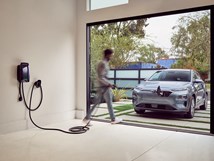Europe to Test Automated Brakes for Pedestrian Safety
The European New Car Assessment Program (NCAP) next year will add new ratings for vehicles equipped with automatic emergency braking systems that detect and counter potential collisions with pedestrians.
#regulations
The European New Car Assessment Program (NCAP) next year will add new ratings for vehicles equipped with automatic emergency braking systems that detect and counter potential collisions with pedestrians.
Under the program, NCAP will rate how well vehicles with automated emergency brakes respond to pedestrians during three simulation tests: children stepping out from behind a parked car, and adults walking or running into a vehicle’s path.
NCAP says such vehicles should be able to prevent pedestrian collisions at speeds as fast as 25 mph and reduce collision speeds to less than 25 mph when a vehicle is travelling 40 mph.
Pedestrians, cyclists and motorcyclists accounted for almost half (47%) of Europe’s 26,000 road deaths last year, according to the organization. On average, there are about four permanently disabling injuries—such as damage to the brain or spinal cord—and eight serious injuries for every death. Citing independent analysis of real-world crash data, NCAP says automated emergency braking systems could prevent one in five fatal pedestrian collisions.
Most pedestrian collisions occur when drivers fail to brake, brake too late or brake too gently, which NCAP notes often occur when a driver is distracted or a pedestrian crosses unexpectedly.
Automated systems use lasers, radar and/or cameras to detect imminent collisions and apply the brakes to stop or reduce impact speeds. Vehicles currently equipped with such systems include the Audi Q7, BMW 2 Series and i3, Ford Mondeo, Lexus NX, Mercedes C-Class, Mini Cooper, Volvo V40 and XC90, Toyota Avensis and VW Passat.
RELATED CONTENT
-
Increasing Use of Structural Adhesives in Automotive
Can you glue a car together? Frank Billotto of DuPont Transportation & Industrial discusses the major role structural adhesives can play in vehicle assembly.
-
GM Develops a New Electrical Platform
GM engineers create a better electrical architecture that can handle the ever-increasing needs of vehicle systems
-
Multiple Choices for Light, High-Performance Chassis
How carbon fiber is utilized is as different as the vehicles on which it is used. From full carbon tubs to partial panels to welded steel tube sandwich structures, the only limitation is imagination.








